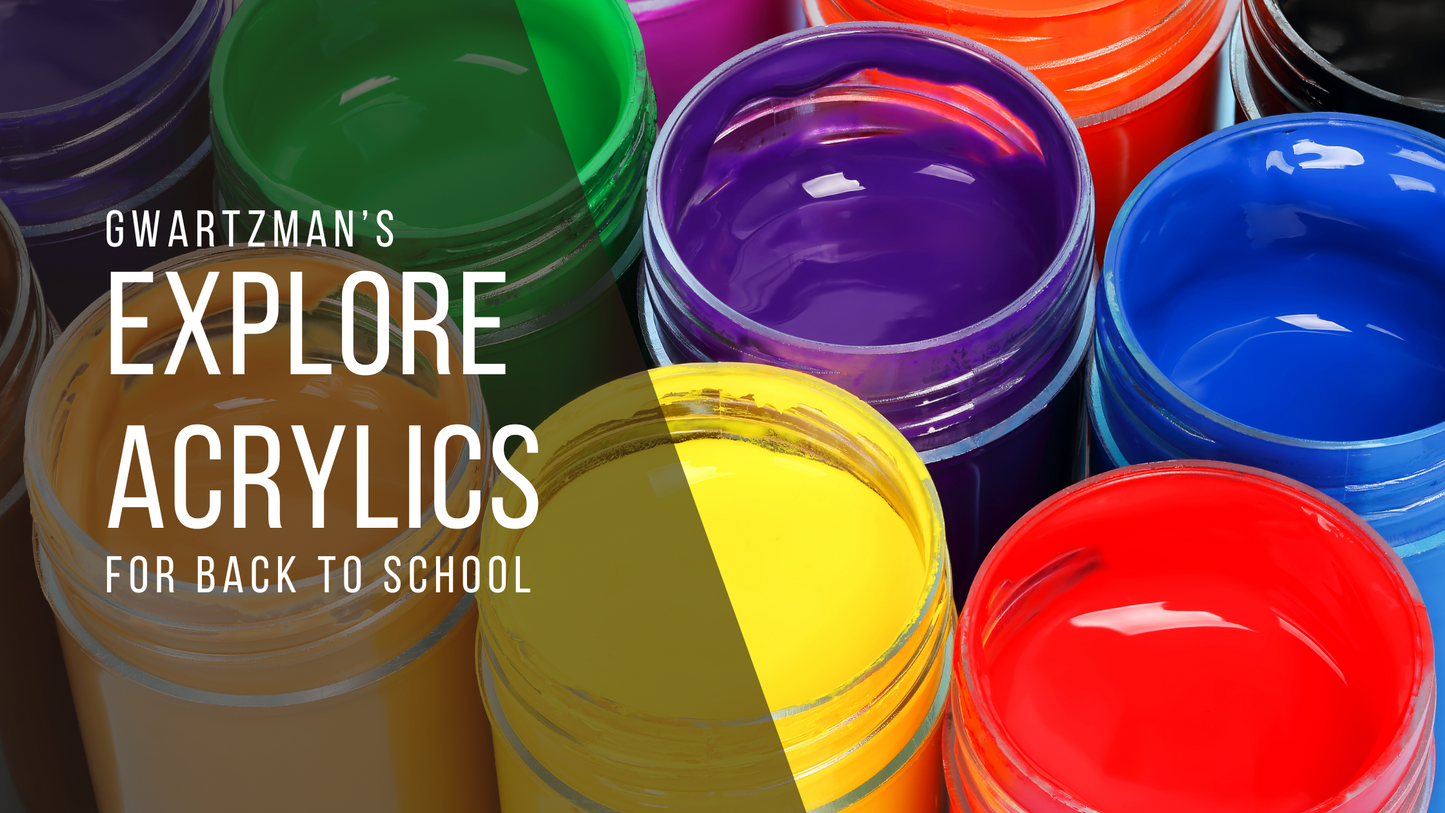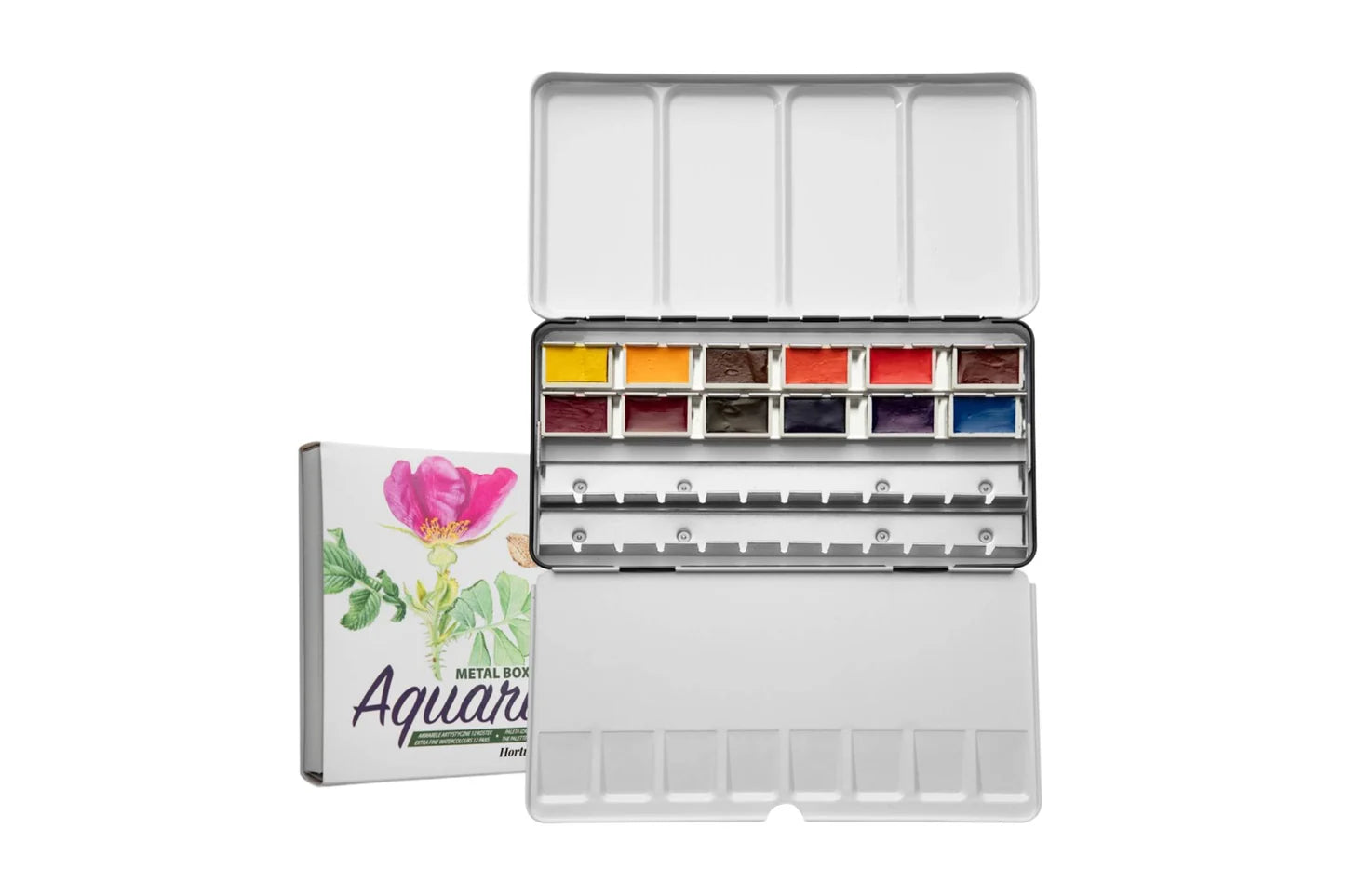
Red is an important colour for humans, and it’s not a colour that many other mammals can see. It’s thought that primates developed the ability to see red because it makes it easier to see ripe fruits amongst green vegetation.

Above you can see the mass tone of four of the more unusual reds from Master’s Gwartzman’s house brand oil paint. Vermilion has strong orange tone, Carmine is a bright true red, Rose leans towards violet, and Marie’s Transparent Red has a brown undertone.
Many cultures have viewed red with many meanings. Red is the colour of blood, war, love, passion, anger, heat and danger. In many Asian cultures red is a traditional colour for brides, and has often been associated across many cultures with royalty and wealth.
It’s a colour that attracts a lot of attention and is used frequently in warning signs; such as stop signs and railway crossings.
Red, along with blue and yellow is a primary colour in traditional art colour theory, meaning it is a colour that cannot be mixed (ie, like the secondary colours of green, orange and purple).
Red has been used as a pigment since prehistoric times. The amazing cave paintings in Lascaux and many other locations use naturally occurring red pigments such as red ochre which is still in use today. Known as an “earth red” because it’s made from clay that has an iron oxide known as hematite. This gives the clay a distinct red tone instead of the usual brownish-yellow. Red Ochre is still widely used in oil and acrylic paints. Other than the name, the paint label will have red ochre’ s pigment number on it (PR102)
Another traditional red pigment that is Vermilion, which is no longer in common use. It was used in ancient China and Rome, and was made from a toxic mineral called Cinnabar. Cinnabar was a vibrant red-orange color and was used for making paints, lacquers, ceramic glazes, and calligraphy ink reserved for Chinese emperors. During the 20th century, it was declared too expensive and too unsafe to mine and cadmium red generally replaced it.

Tinting strength varies with red pigments. Vermilion has a high tint strength and will need quite a bit of white to get lighter. Rose and Carmine have similar, lower tinting strengths, and will need much less whites to form tints.
Cadmium red, PR108, (and orange, yellow and green) are popular paints with artists, because unlike many other pigments are, brightly coloured, lightfast and opaque. They are used in oil, watercolour and acrylic painting, and are often in the final layers of paint because of their opacity and vibrancy. However, cadmium pigments are not without their own dangers. Cadmium is a heavy metal, and if inhaled is a known carcinogen. It’s not recommended to spray it, and wearing gloves or barrier cream while painting with it is best for your health.
Many artist’s paint companies are starting to create safer, less toxic paints that still have all the qualities of cadmium pigments. Gwartzman’s has Liquitex’s and Windsor & Newton’s Cadmium Free line of paints.
A common term that you might have heard in reference to paints and dyes are lake colours. Lake colours were made with dyes set with a mordant to make them more opaque and lightfast, a historic practice that goes back to ancient Egypt. A few common lake colours were red oak, crimson lake and carmine lake. These were made by crushing the shells of tiny scale insects to make the red dye. The cochineal beetle, native to South America was used to make Carmine Lake, and is still used to make dyes today. Carmine’s modern replacement in paint is Quinacridone Red.

Here, bone black is mixed with Rose, Vermilion, and Carmine to make shades of red.
Another common red is madder lake, or rose madder, derived from the madder plant’s roots. It has been used since ancient times to dye clothing. As a paint, it’s a transparent red-violet color that was used extensively until the late 19th century. In 1869 it became the first dye to be reproduced synthetically in a lab, essentially stopping the production of the madder plant for dyes.
Synthetic madder is known as Alizarin Crimson (PR83) and still retains the deep magenta hue of madder lake. It has a high tinting strength meaning that only a small amount is needed to make tints with white. You might also see this pigment PR83 used in Cadmium Red Hues, but don’t be fooled, you won’t get the same opaque colour.
Red pigments and dyes have been used to create artist’s materials for thousands of years. Whether you’re looking for a bright opaque orange red, a transparent magenta, or something in between, Gwartzman’s is here to help you find the right colour for your creation.








